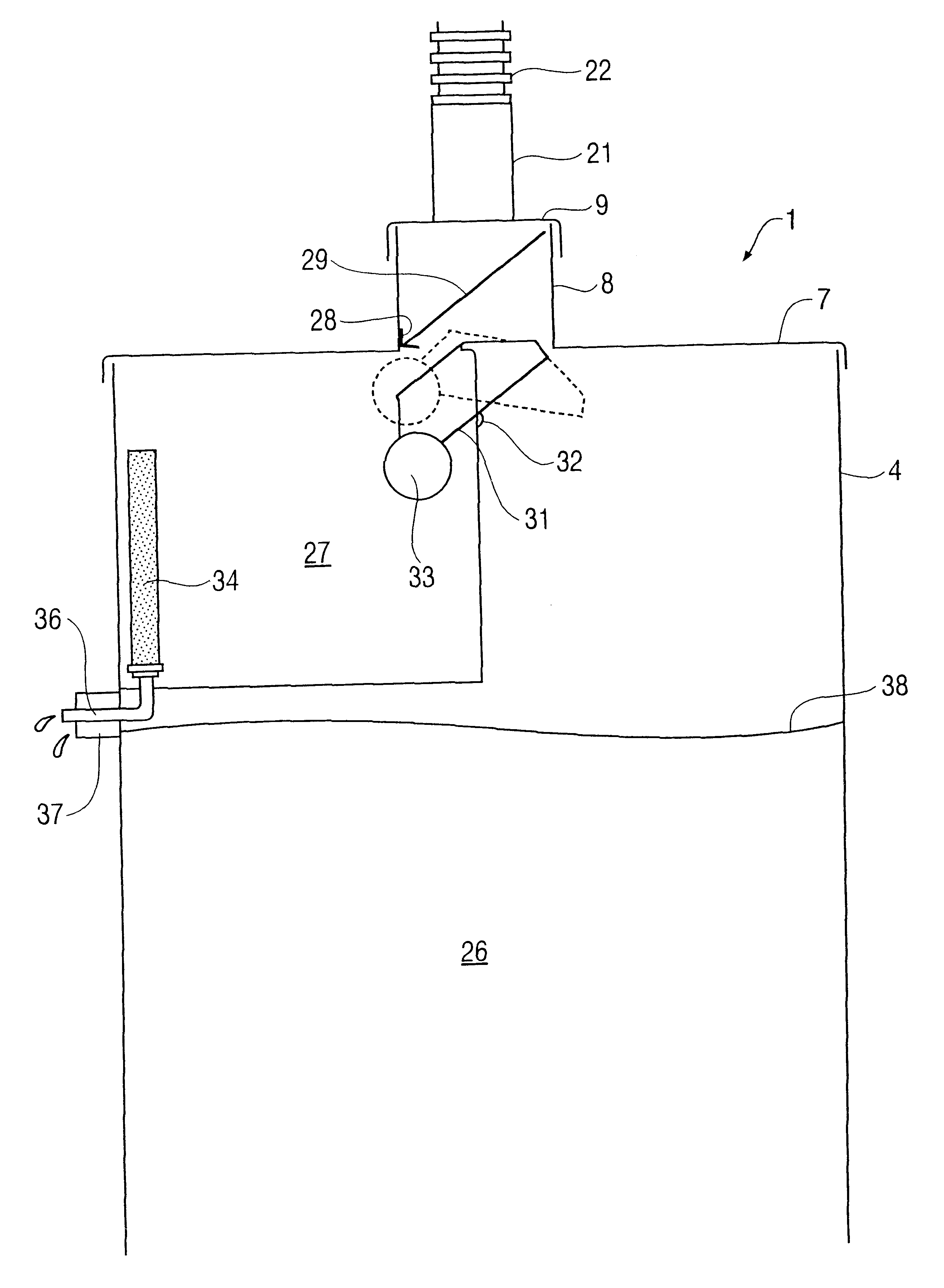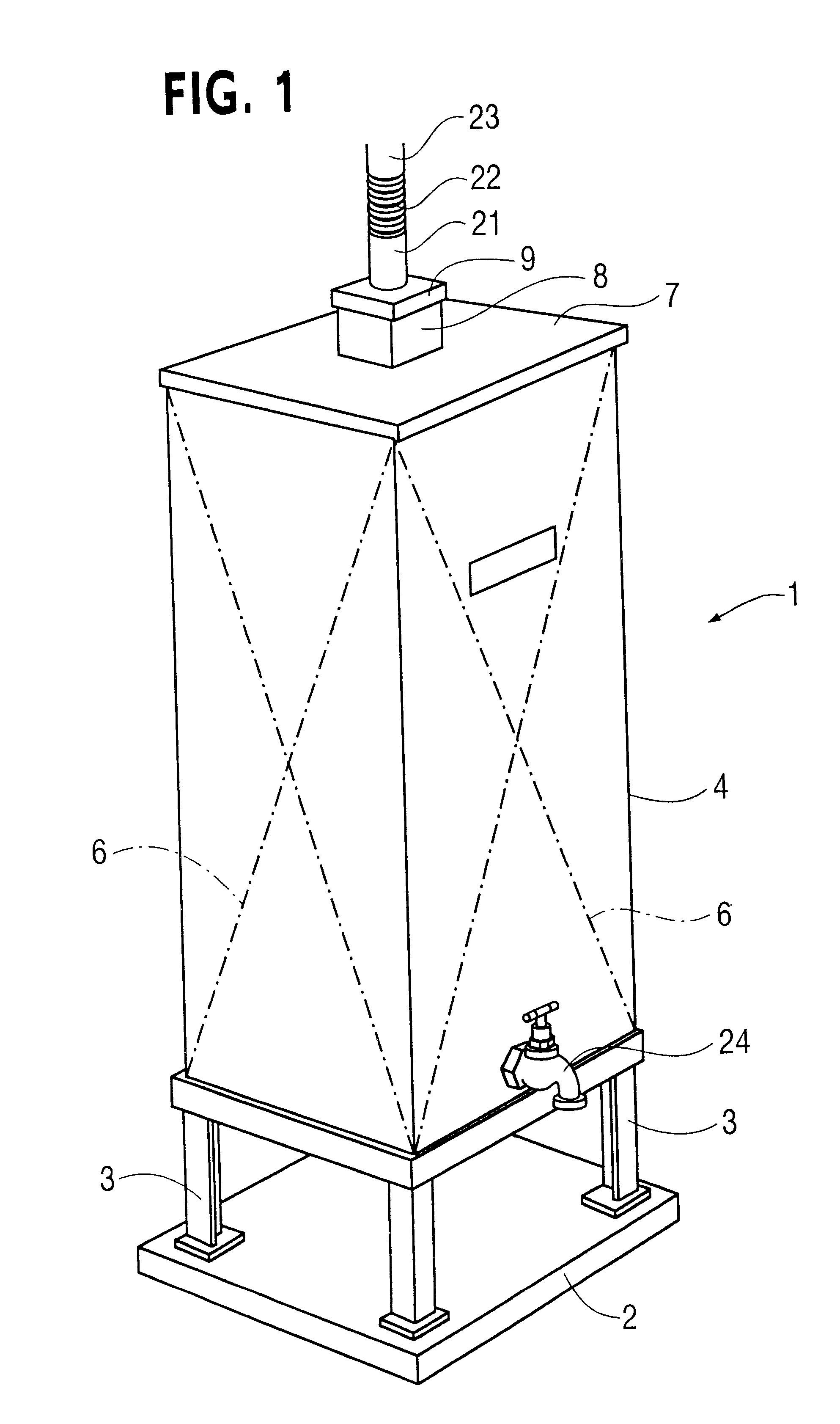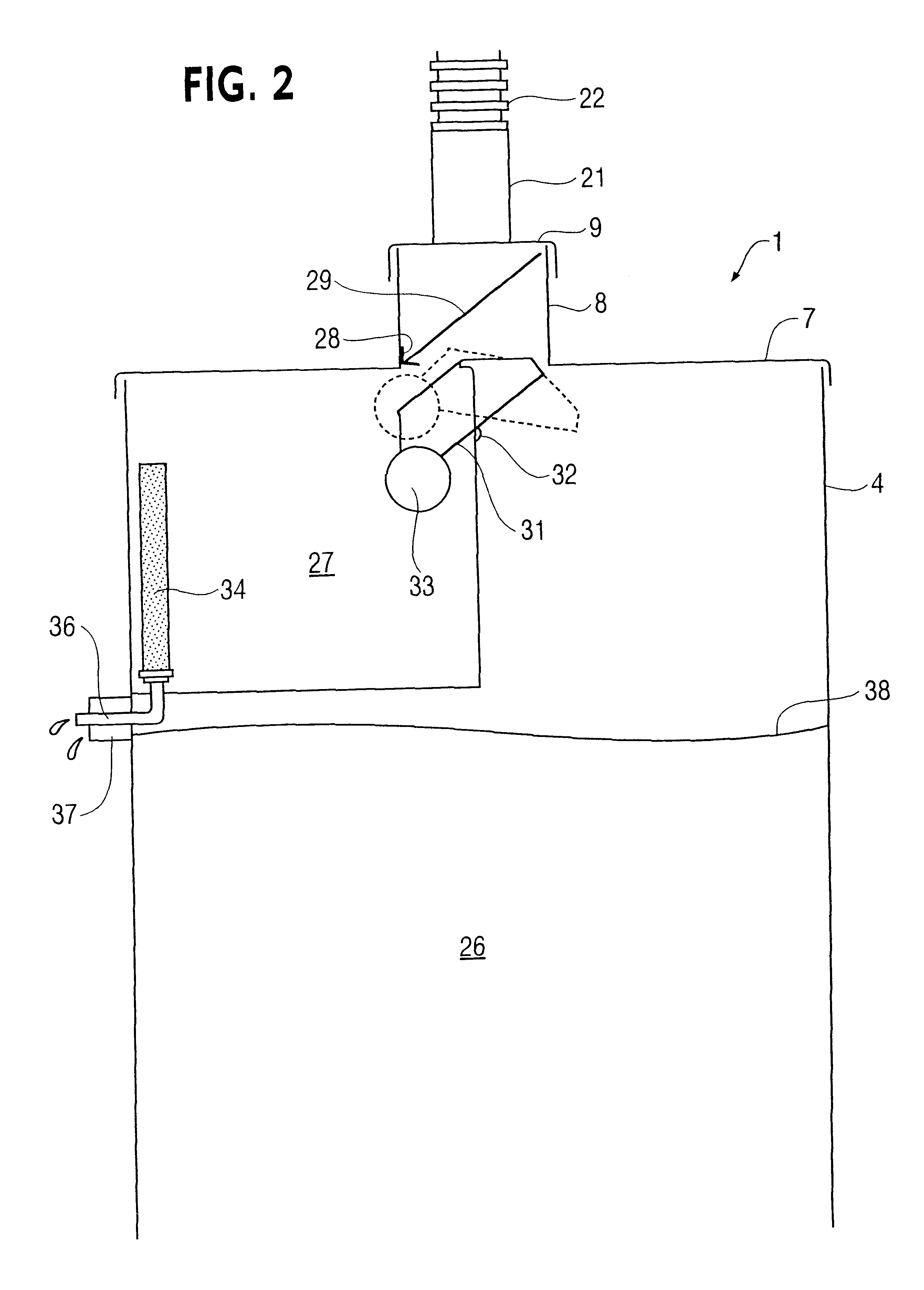Rain water vessel
a technology for water vessels and water tanks, applied in the field of water vessels, can solve the problems of many people, water supplied is not considered to be of particularly high quality, and colour or taste is not acceptable to a household
- Summary
- Abstract
- Description
- Claims
- Application Information
AI Technical Summary
Benefits of technology
Problems solved by technology
Method used
Image
Examples
Embodiment Construction
Preferably the diverter valve comprises a chute.
Preferably the chute is pivotally mounted such that in one pivoted position it is inclined towards the dump tank and in another pivoted position it is inclined towards the main tank.
Preferably the chute is located directly below the inlet.
Preferably the control means comprises a float.
Preferably the float is directly connected to the chute although indirect connection is possible.
In one instance, the drain means comprises at least one orifice of a diameter such as to achieve the desired rate of outflow. Preferably the at least one orifice is provided by a filter.
The drain means may comprise a valve operative in use to vary the rate of outflow.
Preferably the drain means will substantially drain the dump tank in about 5 minutes or less.
Preferably the inlet has a sieve to catch leaves and debris.
Preferably the inlet comprises a spigot opening upwards and a socket fitted with an ingress tube; the socket being adapted to fit over the spigot...
PUM
 Login to View More
Login to View More Abstract
Description
Claims
Application Information
 Login to View More
Login to View More - R&D
- Intellectual Property
- Life Sciences
- Materials
- Tech Scout
- Unparalleled Data Quality
- Higher Quality Content
- 60% Fewer Hallucinations
Browse by: Latest US Patents, China's latest patents, Technical Efficacy Thesaurus, Application Domain, Technology Topic, Popular Technical Reports.
© 2025 PatSnap. All rights reserved.Legal|Privacy policy|Modern Slavery Act Transparency Statement|Sitemap|About US| Contact US: help@patsnap.com



